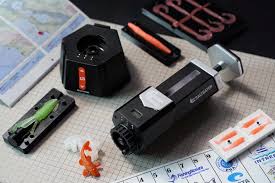
Breaking News
 $11 Trillion Quietly Moved - Americans Will Freeze & Obey When Market Collapse Hits : Chase Hughes
$11 Trillion Quietly Moved - Americans Will Freeze & Obey When Market Collapse Hits : Chase Hughes
 Econ 101 - 2026 Early Economic Forecast
Econ 101 - 2026 Early Economic Forecast
 Buy'r breaks the Blackrock monopoly- How the corporate club controls America
Buy'r breaks the Blackrock monopoly- How the corporate club controls America
 An AI Expert Warning: 6 People Are (Quietly) Deciding Humanity's Future! We Must Act Now!
An AI Expert Warning: 6 People Are (Quietly) Deciding Humanity's Future! We Must Act Now!
Top Tech News
 Build a Greenhouse HEATER that Lasts 10-15 DAYS!
Build a Greenhouse HEATER that Lasts 10-15 DAYS!
 Look at the genius idea he came up with using this tank that nobody wanted
Look at the genius idea he came up with using this tank that nobody wanted
 Latest Comet 3I Atlas Anomolies Like the Impossible 600,000 Mile Long Sunward Tail
Latest Comet 3I Atlas Anomolies Like the Impossible 600,000 Mile Long Sunward Tail
 Tesla Just Opened Its Biggest Supercharger Station Ever--And It's Powered By Solar And Batteries
Tesla Just Opened Its Biggest Supercharger Station Ever--And It's Powered By Solar And Batteries
 Your body already knows how to regrow limbs. We just haven't figured out how to turn it on yet.
Your body already knows how to regrow limbs. We just haven't figured out how to turn it on yet.
 We've wiretapped the gut-brain hotline to decode signals driving disease
We've wiretapped the gut-brain hotline to decode signals driving disease
 3D-printable concrete alternative hardens in three days, not four weeks
3D-printable concrete alternative hardens in three days, not four weeks
 Could satellite-beaming planes and airships make SpaceX's Starlink obsolete?
Could satellite-beaming planes and airships make SpaceX's Starlink obsolete?
Desktop injection molding machine is a faster, squishier alternative to a 3D printer

Currently the subject of a Kickstarter campaign, the Saltgator (no, we don't know where that monicker came from) is manufactured by a Hong Kong/Texas-based startup of the same name. Interestingly enough, it was invented by a group of anglers and engineers who wanted to make their own custom fishing lures at home.
Looking a bit like a food processor, the Saltgator consists of two sections: a squat control base, and a tall removable injection chamber that sits on top of that base.
The device works with molds that can either be purchased in physical form, 3D-printed (on a third-party printer) from a Saltgator file library, or 3D-printed from the user's own custom files. Importantly, the molds can be printed out of commonly-used polymers such as PLA, PETG or ABS without any worries about them melting – the system operates at a temperature range of 176 ºF to 410 ºF (80 ºC to 210 ºC).
The injection molding process begins with the user pouring a liquid elastomer mixture into the injection chamber. Saltgator offers its own system-specific SoftGel material, although the company is quick to point out that the system is also compatible with substances such as soft PVC, two-part silicone, and dual-component polyurethane.
The injection chamber is then placed on the control base, which is in turn switched to a given heating temperature and mixing time (as determined by the mixture being used, and the desired firmness). That chamber is sealed, plus the SoftGel is non-toxic, so harmful fumes reportedly shouldn't be a problem.
Once the heating and mixing is complete, the injection chamber is removed from the base, its bottom-located nozzle is inserted into a hole in the mold, and the liquid is injected by pressing down on a plunger on top. After a three-minute curing time, the two halves of the mold are pulled apart, and the finished object is removed. The entire process is claimed to take no more than 10 to 15 minutes.

 First totally synthetic human brain model has been realized
First totally synthetic human brain model has been realized Mach-23 potato gun to shoot satellites into space
Mach-23 potato gun to shoot satellites into space

